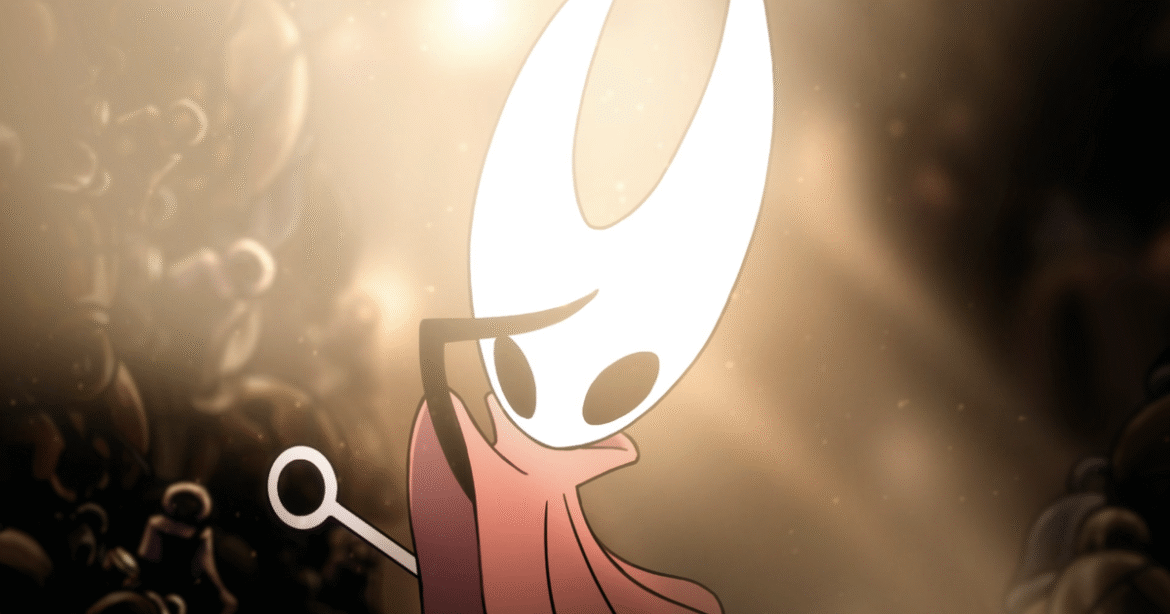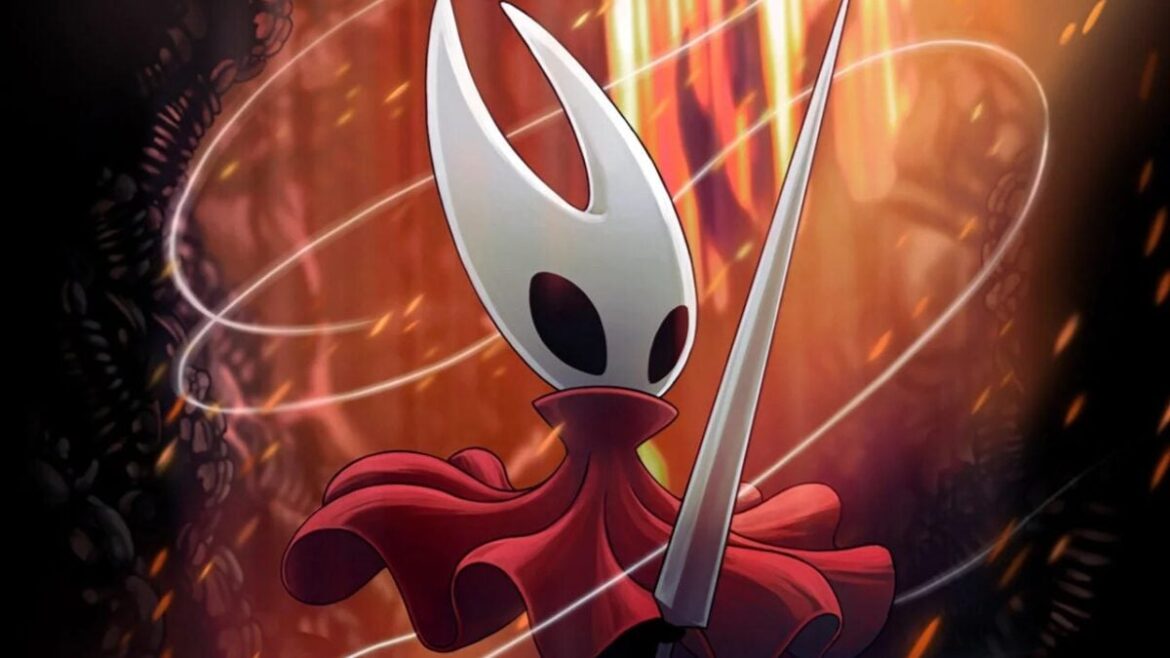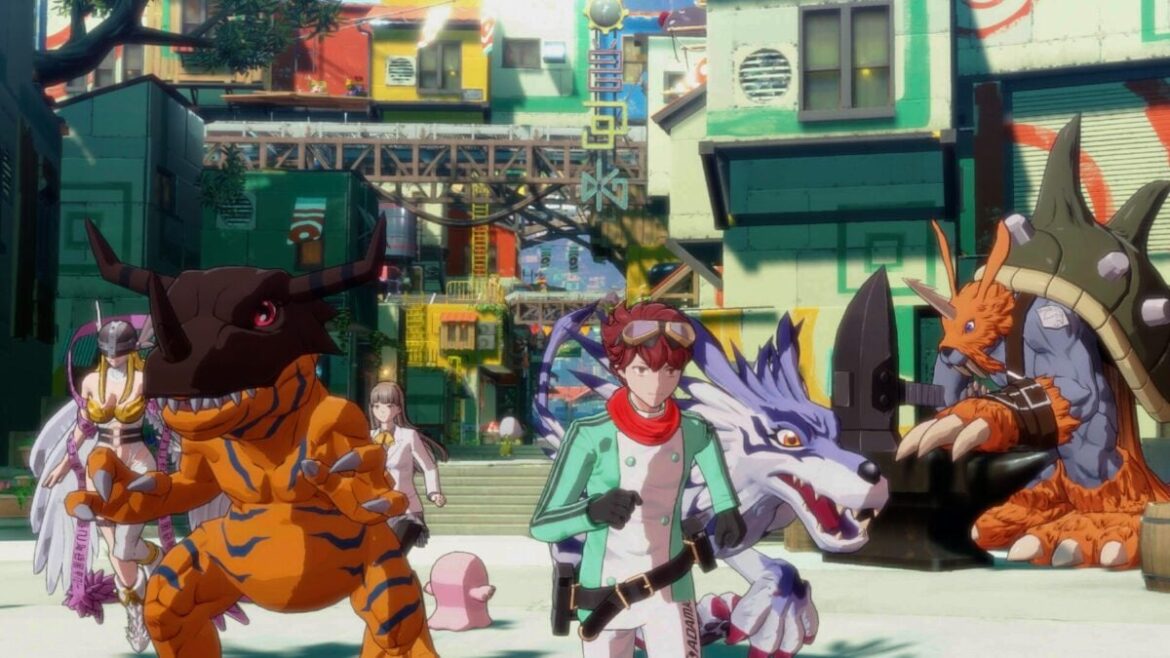Hollow Knight: Silksong review
Hollow Knight: Silksong has a mean streak that sometimes tilts into vindictiveness, but its pin-sharp combat and wondrous exploration are too good to pass up.
- Developer: Team Cherry
- Publisher: Team Cherry
- Release: September 4th 2025
- On: Windows
- From: Steam, Game Pass
- Price: $20/£17/€20
- Reviewed on: Steam Deck; Intel Core i9-10900K, 32GB RAM, Nvidia RTX 3090, Windows 10
I want to give Hollow Knight: Silksong a thrashing. A fully suited C-suite bollocking. I want to verbally repay unto it every cruel death, every pernickety jumping puzzle, every time-thieving runback it’s inflicted on me across the past five days.
But I can’t. For every moment of frustration, there are five of relief, of joy, of beauty even. As in Hollow Knight, Silksong stretches itself over a vast Metroidvania map, and yet its intricacies – its narrowest tunnels leading to grand new regions, its more acrobatic and tailorable combat movesets – make for constantly rewarding exploration, as well as some thrillingly free-flowing bugfights. There have been a couple times when I never wanted to play it again, and many more when I wish I never had to stop.
This time, as you traverse the deeply religious (and utterly bell-obsessed) kingdom of Pharloom, you’re playing as Hornet – a recurring Hollow Knight boss whose newly weakened state suggests she’s spent the last eight years eating Deliveroo and endlessly refreshing her own subreddit. Start reawakening abilities and unearthering upgrades, though, and some of that old power starts humming once more. Her heal is riskier than the Knight’s, using up an entire supply of silk/soul/energy/whatever, but much more potent, and equipping different crests will – similar to a stance system – significantly alter her base moveset of needle slashes. Even her dash power, gained relatively early, adds sprinting and long-jump abilities that the Knight’s equivalent never did.
Very quickly, then, Hornet becomes a more agile hero, albeit one that needs skillful application of her talents to avoid shunting into another bug’s blade. It’s also understandable that to counter this agility, she should face more powerful foes, though how Silksong goes about this is a bit blunt: it basically gives everyone outside of the humblest larvae an unexpectedly generous health pool and, for boss and grunt bugs alike, the strength to hit for two masks of health instead of the standard one.
Image credit: Rock Paper Shotgun/Team Cherry
This is harsh. The maths involved essentially make the first, hard-earned mask upgrade useless. You start with five, so upping to six won’t actually let you survive an extra hit, which together with the reduced availability of heals makes it feel like you need to play an even more pixel-perfect dodging game than in Hollow Knight.
Still, since all that falls under a fair and long-lasting tenet of Soulslikery – don’t get hit in the first place – I can’t get too cross about it. Yet Silksong does, sometimes, let slip a more recognisably callous side, one with – at best – antiquated views on punishing failure.
This is most apparent in some of the platforming challenges, specifically those that rely heavily on pogoing. For the uninitiated, that’s performing a downwards strike on an enemy or environmental prop to bounce back up off it. These bits are uniformly horrible, because unlike so much of Silksong’s combat – and indeed, the majority of its running/jumping/grappling moves – pogoing doesn’t feel consistent.
Sometimes I’ll boing into the sky, nearby insects holding up little ‘10.0’ signs (in my mind). Others, I’ll get about three millimetres of air from the same manoeuvre and tumble fatally into some spikes. Because there are always spikes. It gets marginally more forgiving with a particular crest that swaps Hornet’s default diagonal thrusts for a straight downward sweep, but the uneven reactions to successful hits remains a source of lost health and swear words throughout.
Image credit: Rock Paper Shotgun/Team Cherry
It doesn’t need to be like this, and the worst part is that Silksong knows it. There’s one region that’s basically one super-extended platforming run, and despite it being diamond-hard in its own right, I relished fresh attempts because I was only ever being held back my own timing and movements – not the whims of a bouncy flower.
Also, frankly, at least that region had reasonable access to benches. Silksong typically subscribes to the Dark Souls 2 school of thought on respawn points: not many, and none in useful places, especially not near bosses or midway through lengthy pogo gauntlets. If I squint I can almost, sort of, vaguely, kind of see the point to these runbacks: something about penalising your carelessness, combined with the added tension of having to fight or parkour your way back to your dropped loot without another death erasing it forever.
Except the tension thing doesn’t work because you can just dash over or under every non-boss enemy, and losing to a boss themselves already carries the punishment of not allowing you to play the game any further. In other words, they’re boring busywork, a fact that modern Souls and Soulslikes have increasingly got wise to. Even FromSoftware, developers to whom the Hollow Knight games partially owe their existence, knew to put Stakes of Marika in Elden Ring.
Image credit: Rock Paper Shotgun/Team Cherry
So yes, Silksong is hard, and not always in ways that are fun to overcome. There is, however, a touch of give and take here. In exchange for tougher battles and platforming, exploration and navigation get some concessions – none of which amount to full-on handholding, but should let you enjoy wandering without needing a pad full of notes on the side. Objectives and sidequests, for example, are now tracked in your journal. Metroidvania heresy? Not quite – quest descriptions are still light enough on details that you’ll still need to listen to NPC chatter for meaningful pointers. It’s just a little help with keeping count of which errands you’ve agreed to, or how many collectibles you’ve gathered for certain tasks.
Background signage highlighting benches, shops, and fast travel points also seem more frequent and much harder to miss than in Hollow Knight. Again, this is hardly the game playing itself, but as long as I’m being battered around by double-damaging megafauna, I think I deserve the likes of bigger signs. New players, who are otherwise afforded nothing but pain, should find these help them avoid getting lost as well.
Still, sometimes it’s nice to get lost on purpose. Pharloom is, as previously discussed, an absolute looker, and half the pleasure of navigating its caves, crypts, and palaces is looking for its next chunk of lavishly drawn, beautifully lit fantasyscape. It’s still a broken vestige of a once-prosperous realm, as is custom, but it’s a bit more diverse than Hallownest, enticing you into magma-pooled factories and snow-capped mountains. Where there’s more of a crossover between games, the qualities of each biome seem heightened and intensified: its leafy areas are slightly more verdant, its royal towers slightly more opulent. It’s a darkly wonderful place to be, hardship or no.
Image credit: Rock Paper Shotgun/Team Cherry
It’s also another, enormous example of how well Team Cherry can effectively beckon you to danger. Almost every tunnel or silo is littered with offshoots and ledges, just begging for a quick look, which often turns into a long look, which might just turn into two hours poking around a completely different area that you may have never discovered if you didn’t take that one turn.
These paths won’t always lead to something grand, or even something you can attend to immediately – this is still the M-V word – but going off-track becomes second nature when so many do lead to something interesting, or valuable, or indeed, something you just know you’ll come back to later. Also, that tingly sense of danger invoked by runback apologists? You get something just like that every time you enter a new area, creeping forward into the unknown with a watchful eye out for ambushes.
There is some backtracking, especially if you’re doing sidequests, though the sprint and those well-marked fast travel spots shave off most of the tedium. Besides, revisiting settlements makes for good opportunities to check in with Silksong’s likeable cast of NPCs, who very often have something new to say on repeat visits – about the world, about its story, about you – even if they’ve nothing new to ask in return.
Silksong’s simplest pleasure, mind, is its greatest one: hitting nasties with a sharp piece of metal. The hefty, percussive thwack of Hornet’s needle is even more of a satisfying sense-tickler than Hollow Knight’s nail, and the extra mobility – compounded by the meatiness and higher damage output of enemies – ensures that fights, big or small, routinely become dynamic back-and-forths where victory or death balance on a pin’s edge. Silksong’s combat has had the better of me dozens of times, and yet it’s so electric and frenetic that writing this paragraph still makes me wish I was back in the midst of it.
Image credit: Rock Paper Shotgun/Team Cherry
After getting past the initial couple of basic bigbugs, there’s a good mixture of boss concepts in here as well. My favourites are the ones that simply have you one-on-one with direct fighters – straight duels serve as the best showcases for all your combined talents – but there’s a respectable variety across the board, ranging from giants that mess with the safety of the terrain to bullet-hell hazard spewers and, in one particularly memorable battle, twin automatons that make Silksong’s oft-balletic fighting a literal dance. They’re fun to fight, even if they’re not at all fun to lose to.
Happily, Silksong also gives you much more scope to tweak your offensive and defensive options than the original’s charm system afforded. On top of Hornet’s thread skills, replacing the Knight’s spells and Nail Arts, an unlockable array of tools provide heaps of new melee, ranged, or protective gadgets. These all plug into your selected crest, which determines base attack patterns – I ended up settling on the long, loping swings of the Reaper crest, with shorter, faster stabs or more powerful charged-up strikes emerging as alternatives. Ultimately, it all amounts to a welcome degree of flexibility, especially where bosses are concerned. As much as these fights are decided by dodging skills, I’ve definitely had some clashes go smoother after mixing up my tools.
I’m still not convinced that counterbalancing your own strengths requires a mean streak that’s quite as mean as Silksong’s. And I didn’t even have space to complain much about the trade economy, which bleeds you dry for rosary beads (Pharloom’s chosen currency) despite only half the game’s enemies dropping them. Still, when I look at Silksong in my Steam library – a strange thing in itself, given how long it took to get there – I don’t think about counting beads. I don’t even think about boss runbacks. I think about the little branches on my map, representing territory unexplored and adventures yet to be had. I think about how I can shine my needle to a keener edge, and what would happen if I thrust it into that lanky bug I couldn’t get part earlier.
In short: Silksong, I can and will get mad at you. But I can’t stay mad at you. You brilliant, beautiful bastard of a game.










